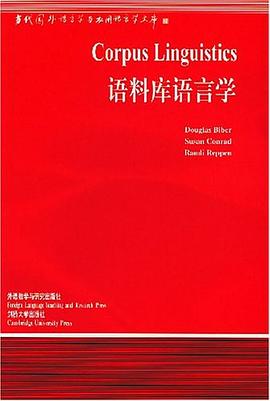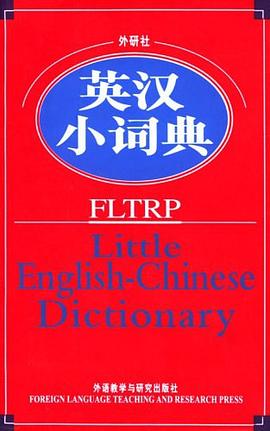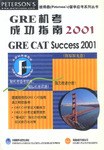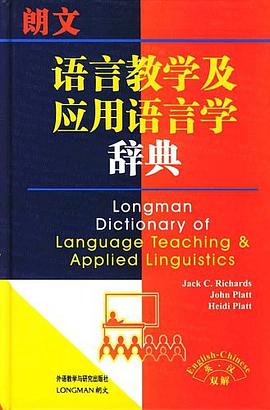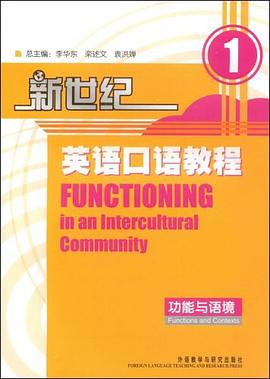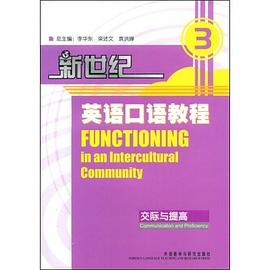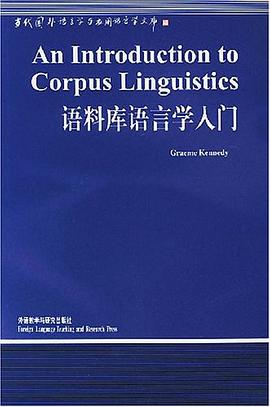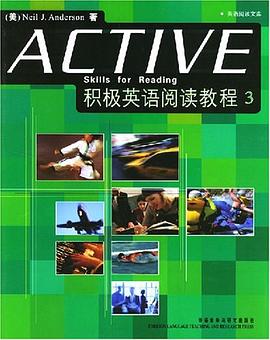

具体描述
《普通语言学概论》内容简介:Linguistics is a wide-ranging discipline. Within its compass lie topics and questions far apart from each other, but all. nonetheless. relevant to our understanding of the nature, structure, use and history of human language. this new. fourth edition of General Linguistics draws these strands together into a comprehensive and accessible introduction to the subject. The book considers; semantics and pragmatics dialect and style phonetics and phonology morphology and syntax, with reference both to traditional and to current theories comparative-historical linguistics and linguistic typology linguistics' relation to other disciplines the practical applications of linguistics the 2.500 years of linguistic thought that lies behind what we do and think today .
The fourth edition of this respected textbook has been fully revised and updated. It introduces readers to important current and new developments, theories and insights. but always within the context of the basic body of subjects traditionally included in the comprehension of general linguistics. Aided by a thorough bibiography. this book will prove essential reading for all students embarking on linguistics courses at any level.
当代国外语言学与应用语言学文库
作者简介
目录信息
王宗炎序
导读
Preface to first edition
Preface to second edition
Preface to third edition
Preface to fourtb edition
System of reference
Transcriptions and abbreviations
General linguistics: the scope of the subject
1.1 General linguistics as the study of language
1.1.1 Languages and languages
1.1.2 Descriptive, historical, and comparative linguistics
1.1.3 The term 'philology'
1.2 Linguistics as a science
1.2.1 Implications of the term 'science'
1.2.2 Practical applications
1.3 The range of general linguistics
1.3.1 Levels of analysis
1.3.2 Language and communication
1.3.3 Phonetics, phonology, grammar, semantics
1.4 Semantics
1.4.1 Philosophical and linguistic interest in meaning
1.4.2 Word meaning
1.4.3 Sentence meaning
1.4.4 Extralinguistic context
1.4.5 Translation
General bibliography
Bibliography for Chapter Ⅰ
Notes to Chapter Ⅰ
2 Theoretical and methodological considerations
2.1 Abstractions
2.1.1 The status of linguistic abstractions
2.1.2 Structural linguistics: syntagmatic and
paradigmatic relations
2.2 Dialect, idiolect, style
2.2.1 Dialects as subdivisions of languages
2.2.2 Dialect mapping: isoglosses
2.2.3 Class dialects and 'standard languages'
2.2.4 Criteria for determining dialect status
2.2.5 Linguistic tendencies affecting dialectal divisions
2.3 General and particular
2.4 The structural treatment of lexical meaning
2.4.1 Lexical interrelations
2.4.2 Collocation
2.4.3 Semantic field theory
Bibliography for Chapter2
Notes to Chapter2
3 Phonetics
3.1 Articulatory phonetics
3.1.1 The spoken foundation of language
3.1.2 Primacy of articulatory phonetics
3.1.3 The physiological basis of speaking
3.2 The organs of speech
3.2.1 The glottis
3.2.2 The supraglottal organs of speech
3.2.3 Nasalization
3.3 Segmentation: vowel and consonant
3.3.1 Segmentation
3.3.2 Vowels and consonants: transcription
3.3.3 Vowels
3.3.4 Consonants
3.4 Acoustic phonetics
3.5 Piurisegmental features
3.5.1 The continuum of articulation
3.5.2 Glottal and supraglottal features
3.5.3 Stress
3.5.4 Pitch
3.5.5 Voice quality
3.6 Phonetics in linguistics
Bibliography for Chapter3
Notes to Chapter3
4 Phonology
4.1 Speech and writing
4.2 Narrow and broad transcription: phonetics and
phonology
4.3 The phoneme theory
4.3.1 The phonemic principle, phonemics
4.3.2 Segmental phonemes
4.3.3 Phonemic analysis of length and stress
4.3.4 The syllable
4.3.5 Tone phonemes
4.3.6 Intonation
4.3.7 Distinctive features
4.4 Further developments
4.4.1 Classical phoneme theory
4.4.2 Juncture phonemes
4.4.3 Prosodic phonology
4.4.4 Generative phonology
4.4.5 Natural generative phonology
4.4.6 Rule ordering
4.4.7 Autosegmental and metrical phonology
Bibliography for Chapter4
Notes to Chapter4
5 Grammar: grammatical elements
5.1 Preliminary questions
5.1.1 Uses of the term 'grammar'
5.1.2 Formal grammar
5.1.3 The basic units of grammar
5.2 The sentence
5.3 The word
5.3.1 Grammatical criteria of word status
5.3.2 Phonological markers of the word unit
5.3.3 Variant word forms
5.4 The morpheme
5.4.1 The morpheme as the minimal grammatical unit
5.4.2 Morpheme variants (allomorphs)
5.4.3 Bound and free morphemes: root and affix
5.5 The semantic status of morphemes
Bibliography for Chapters5 and6
Notes to Chapter5
6 Grammar: grammatical classes, structures, and categories
6.1 Syntactic relations
6.2 Word classes
6.3 Immediate constituents
6.3.1 General principles: basic syntactic structures
6.3.2 Endocentric and exocentric: subordinate and coordinate
6.3.3 Word order and syntactic structure
6.3.4 Cross-cutting of immediate constituents and word boundaries
6.3.5 Comparison with traditional practice
6.4 Grammatical categories
6.4.1 Number, gender, case
6.4.2 Concord and government
6.4.3 Subject and object
6.4.4 Morphology in relation to syntax
6.4.5 Inflection and derivation
6.4.6 Grammatical functions of stress and pitch features
6.4.7 Morpheme and category
6.5 Subclasses, irregularities, and economy
6.6 Grammatical semantics
6.6.1 Semantic correlations
6.6.2 Meanings of grammatical categories
6.6.3 Class meanings and structural meanings
6.6.4 Methodological implications
Notes to Chapter6
7 Current linguistic theory
7.1 Theory formation
7.1.1 Linguistic theory and linguistic practice
7.1.2 Rival theories
7.2 Transformational-generative linguistics (TG)
7.2.1 General considerations
7.2.2 Early formulation: Syntactic structures
7.2.3 Later developments: Aspects of the theory of syntax and after
7.2.4 Government and binding
7.3 Other current theories
7.3.1 General context
7.3.2 Generalized phrase structure grammar(GPSG)
7.3.3 Relational and functional grammar
7.3.4 Dependency grammars
7.4 Earlier post-'structuralist' theories
7.4.1 General context
7.4.2 Tagmemics
7.4.3 M.A.K. Halliday: systemic grammar
7.4.4 Stratificational linguistics
7.5 Postscript
Bibliography for Chapter7
Notes to Chapter7
8 Linguistic comparison
8.1 Historically orientated comparison of languages (comparative and historical linguistics)
8.1.1 The material
8.1.2 The Great Vowel Shift in English
8.1.3 Semantic changes
8.1.4 The Indo-European family
8.1.5 Other language families
8.1.6 The representation of correspondences
8.1.7 The neogrammarian thesis
8.1.8 Loan words
8.1.9 Analogy
8.1.10 Sound change and generative grammar
8.1.11 Historical inferences
8.2 Typological comparison
8.2.1 General principles
8.2.2 Phonetic typology
8.2.3 Phonological typology
8.2.4 Grammatical typology
8.2.5 Linguistic typology and linguistic universals
8.2.6 Structural typology
8.2.7 Lexical typology
8.2.8 Historical change and linguistic typology
8.2.9 Summary
Bibliography for Chapter8
Notes to Chapter8
9 Wider perspectives
9.1 Linguistics, anthropology and sociology
9.1.1 Linguistics and anthropology
9.1.2 Linguistics and sociology: sociolinguistics
9.2 Linguistics and philosophy
9.3 Linguistics and psychology
9.4 Linguistics and language teaching: linguistics and communications engineering
9.4.1 Linguistics and language teaching
9.4.2 Linguistics and communications engineering
9.5 Linguistics and literature
9.6 Outline of the history of linguistic studies in Western Europe
Bibliography for Chapter9
Notes to Chapter9
Index
· · · · · · (收起)
读后感
评分
评分
评分
评分
用户评价
跟索绪尔的《普通语言学教程》风格不一样,可以看一下。Robins师承伦敦学派代表人弗斯,但他本人并没有门户之见,眼界比较开阔。前面有很详细的导读,但读起来还是有点儿难度。
评分原版
评分赞
评分跟索绪尔的《普通语言学教程》风格不一样,可以看一下。Robins师承伦敦学派代表人弗斯,但他本人并没有门户之见,眼界比较开阔。前面有很详细的导读,但读起来还是有点儿难度。
评分我还是更喜欢索绪尔……这一学期的语言学课程终于结束了
相关图书
本站所有内容均为互联网搜索引擎提供的公开搜索信息,本站不存储任何数据与内容,任何内容与数据均与本站无关,如有需要请联系相关搜索引擎包括但不限于百度,google,bing,sogou 等
© 2025 book.quotespace.org All Rights Reserved. 小美书屋 版权所有






